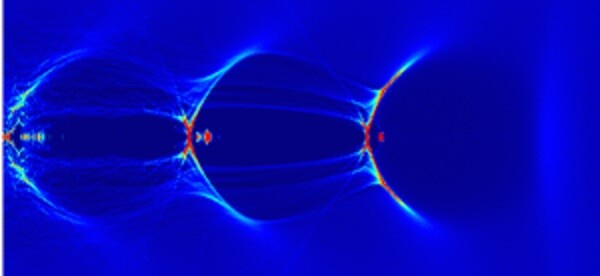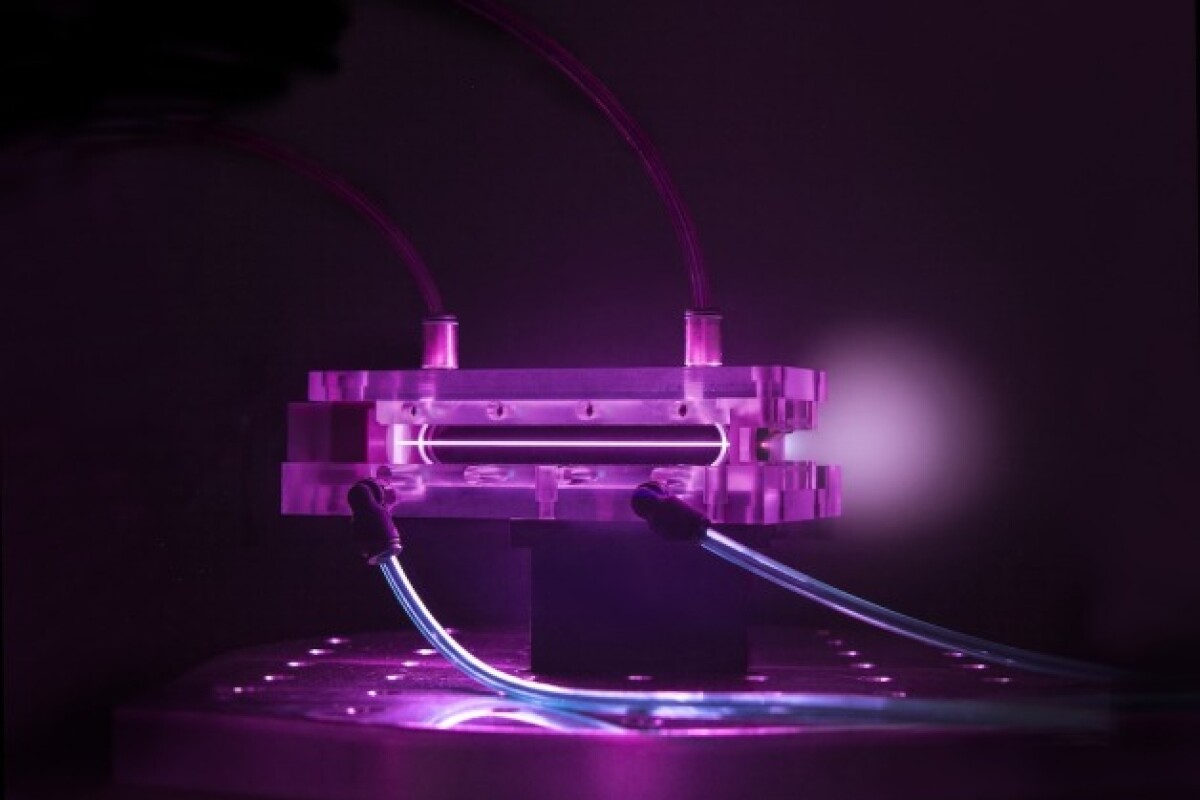Taking careful aim with a quadrillion watt laser, researchers at the US Department of Energy’s Lawrence Berkeley National Lab claim to have managed to speed up subatomic particles to the highest energies ever recorded for a compact accelerator. By blasting plasma in their tabletop-size laser-plasma accelerator, the scientists assert that they have produced acceleration energy of around of 4.25 giga-electron volts. Acceleration of this magnitude over the short distances involved correlates to an energy rise 1,000 times greater than that of a traditional – and very much larger – particle accelerator.
The Large Hadron Collider (LHC) at CERN, for example, is some 17 miles (27 km) in circumference, and accelerates particles by way of a series of sequential, modulated electromagnetic fields contained in a metal cavity. This is perfectly fine for anything up to about 100 mega-electron volts per meter before things go awry and the metal cavity starts to break apart.
By comparison, the tiny Berkeley Lab accelerator achieves its world record by accelerating electrons inside a plasma tube just 9 cm (3.5 in) long up to a speed that would normally take an average particle accelerator many, many miles to achieve (if at all), and in a unit that sits comfortably on the top of a laboratory table.
To be fair to traditional particle accelerators, laser-plasma accelerators take a completely different approach to exciting particles to such enormous energy levels. In this case, the experiment was realized with the assistance of one of the most powerful lasers in the world, the Berkeley Lab Laser Accelerator (BELLA). This laser system produces a beam of light equivalent to a quadrillion watts of power (a petawatt), which the Berkeley researchers used to focus on the very small, straw-like tube that contained the plasma of their particle accelerator. Though, in this initial experiment, it was limited to pulses of a "mere" 0.3 PW or 300,000 gigawatts.
Having said that, the lasers on other current laser-plasma accelerators – such as Stanford's SLAC system – can only produce a small fraction (around a terawatt or so) of the BELLA output to produce about 300 mega-electron volts of acceleration, which shows the enormous power gains with the new system even when used at a fraction of its potential.
"This result requires exquisite control over the laser and the plasma, we’re forcing this laser beam into a 500 micron hole about 14 meters away," said Dr. Wim Leemans, director of the Accelerator Technology and Applied Physics Division at Berkeley. "The BELLA laser beam has sufficiently high pointing stability to allow us to use it."

When fired, the laser energy from BELLA blasted a channel through the plasma while simultaneously producing vast waves of rolling energy that trapped and accelerated free electrons in the plasma to a high-energy state. Researchers likened this process to the way a surfer on a surfboard picks up speed while gliding down the face of an ocean wave.
Though, from the "surfing" electron's viewpoint, it had no surfboard, the wavefront was hurtling along at many millions of miles per hour, and the height of the surf relative to the electron was a wall of plasma thousands of feet tall: Quite a ride.
Before committing to such high energy experiments with the chance that even the smallest miscalculation could result in disaster, the researchers sought methods to model various parameters and test their theories beforehand to see how they may affect the overall outcome for the experiment. To do this, the team turned to the National Energy Research Scientific Computing Center (NERSC) to run computer simulations long before the real-world test set-up began.
"Small changes in the setup give you big perturbations," said Eric Esarey, senior science adviser for the Accelerator Technology and Applied Physics Division at Berkeley Lab, who led the theory team. "We’re homing in on the regions of operation and the best ways to control the accelerator."
Doctor Leemans believes that future work for the team will require creating and validating a new technique for plasma-channel shaping and control, particularly as the team’s next goal in the near-term is to produce an acceleration energy equivalent to 10 giga-electron volts.
To accelerate electrons to these sorts of energies, the researchers will be required to assume even more precise control of the plasma density contained in the pipe through which the laser light is shone. In this way it is hoped that the experiment will produce just the right type of thoroughfare required to scoop up and accelerate much more energetic electrons.
The results of this research were published in the journal Physical Review Letters.
Source: Berkeley Lab





